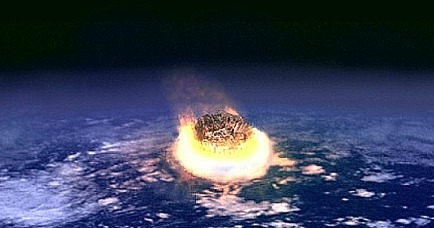
That’s the buzz apparently. A single astronomer in Mexico reported what sounds like a comet in the process of calving. Assuming his report is accurate, working back from his location on the earth, it turns out the best explanation for why other astronomers didn’t see it would be because the object was less than 5,000 miles away:
Essentially, only certain regions of the Earth lined up with both the sun and the comet fragments — much in the same way that only certain locales are able to view a lunar eclipse. In this case, northern India and southeast Asia are among the only other places where people might have seen what Bonilla witnessed — and they “weren’t exactly astronomy hotspots in 1883.
It sounds plausible, and it’s certainly possible. But the claim that a dino-killer comet missed us by a few thousand miles a little over a hundred years ago is a very bold claim. And what do we know about a bold claim ladies and genetlemen? That’s right, and I’m not sure the reported observations of a single astronomer with little in the way of documented evidence fits the bold evidence bill. We need some independent confirmation. Some NEO comet pieces that trace back to that point in space and time, or something along those lines, would do it.

Agreed — extraordinary claims, and all that. Though the story might put more focus on finding NEO planet-killers again, which would be nice.
Phil Plait elaborated some particular problems with the plausibility of this event in this post.
Though, and I’m sure that there are many YECs who will back me up on this, my great-great-grandpa was a bit of a dinosaur.
Gives pause for thought, doesn’t it!?